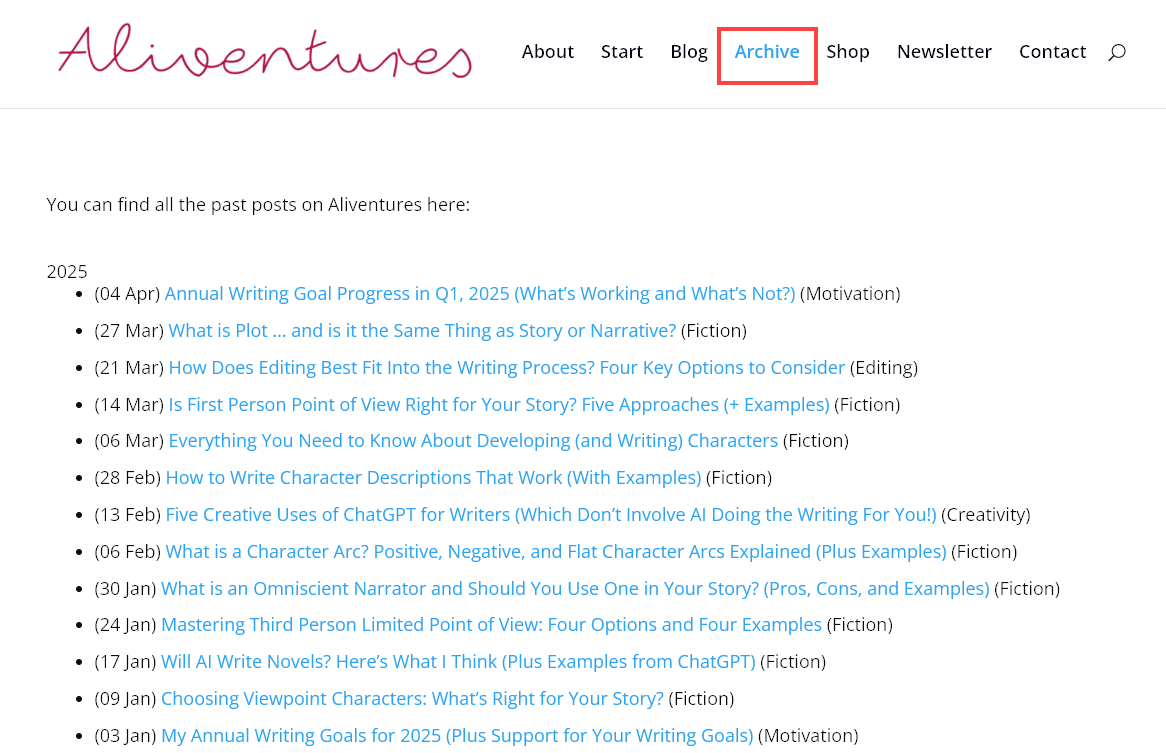On the Aliventures blog recently, we looked at the third-person limited and first person perspectives.
Both of these perspectives are very popular ways of writing ... and they also open up the possibility of showing your reader what your character is
thinking.
In some mediums (e.g. TV/film, unless there's a voiceover), the audience can only tell what a character is thinking through what they say about their thinking in dialogue, and through how we interpret their actions and facial expressions.
In short stories and
novels, though, readers can have direct access to inside the character's head.
Note that you don't have to do this. You can use a third person objective perspective where you simply give narrative and dialogue, without any access to what your characters might be thinking. For an example of that, read Ernest Hemingway's famous short story "Hills Like White Elephants".
Assuming you do want to give the reader at least a glimpse of what your characters are thinking, you need to decide how to show those thoughts on the page.
Let's run through the main options.
Option #1: Use Quotation Marks for Thoughts
One (quite old-fashioned now) method for showing thoughts is to put them on the page just like dialogue, with quotation marks:
John looked at his watch for the third time. "I
can't believe she's late again," he thought.
The advantage of this is that it's very simple. It's clear what the thought is. However, it can be confusing to readers who initially think John's speaking out loud, and you don't tend to see this being used in modern literature.
Option #2: Use Italics for Thoughts
Another method is to put thoughts in italics. I seem to see this more often in slightly older novels now (think 1990s) rather than contemporary ones, though it's certainly still used.
John looked at his watch for the third time. I can't believe she's late again, he thought.
It's clear that the italics represent thoughts, not speech. I personally feel this method is a little distancing (real people don't tend to think in grammatical sentences) but many authors do like it. You
could omit the "he thought" if it feels clunky, just as you can leave off dialogue tags when it's clear who's speaking.
Option #3: Presenting Thoughts as Part of the Narrative
Another option is to simply tell us what the character is thinking as part of the narrative
itself: no need for italics.
John looked at his watch for the third time. He couldn't believe she was late again.
This method can also work for a first person narrative: I looked at my watch for the
third time. I couldn't believe she was late again. What I like about this method is that you don't end up with the choppiness of italics, and you can more seamlessly blend the narrative with your character's thoughts.
Option #4: Using the Character's Own Thought Patterns in the
Narrative
Similar to #3, but going a step further, is to simply give the character's thoughts without using words like "felt", "believe", "thought", and so on.
John looked at his watch for the third time. How could she possibly be late
again?
This is how I prefer to convey character's thoughts where possible: I think it brings the reader closer to the character: we're inside their head, rather than having their thoughts reported like dialogue or summarised.
None of these options is "right" or "wrong" ... it depends on the type of story you're telling, how close you want to bring your readers to your characters, and even the conventions of your genre. It's helpful to know the different options, so you can figure out what's going to work best for you.

